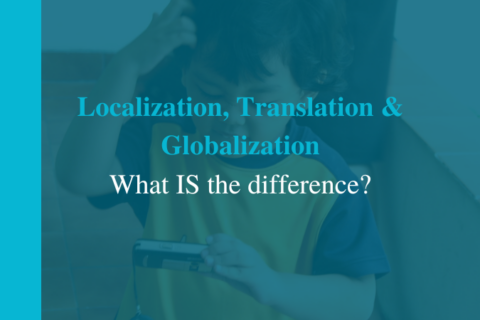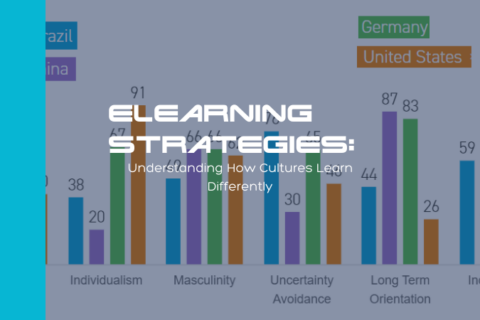eLearning Trends beyond 2021
Universal office closures, the sudden and phenomenal impact of the global spread of COVID in March 2020, was understood rather quickly as a catalyst to an eLearning industry boom. That boom happened almost immediately. Just communicating the rapidly-evolving corporate policies regarding COVID meant instant adoption of basic eLearning techniques. In this article, we review eLearning trends that will impact how we work today and in the future.
Covid’s Impact on eLearning
During the height of the pandemic, eLearning became the best way to communicate effectively to an all-remote workforce. Some industries, banks as great example, were called upon to pivot drastically and start processing tens of thousands of PPP requests with urgency and competency so that hundreds of billions of dollars could be efficiently distributed. How does an institution train thousands of remote bankers to process something – with great consistency – they have never seen before and with so little time? eLearning provided many organizations with the ability to pivot quickly and train their global audiences.
The Future of eLearning
The big question is what role will eLearning play once the dust settles – let’s say beyond 2021? As a participant in the eLearning field, I am greatly encouraged by emerging eLearning trends. The potential for these trends to become permanent fixtures and perhaps best practices, in eLearning utilization, are even more exciting. Here are a few clear trends that will carry on through this decade:
- The speed of eLearning course development. “All hands on deck” must have been a familiar cry in every corporate L&D department last year. I have heard story after story of corporations who had future plans for enhanced remote learning capabilities that suddenly faced a war-like situation of creating content within weeks – employee on-boarding, new product training, traditional compliance education, etc. These groups delivered by becoming more agile and competent at developing content internally, not so masterfully as a specialist I.D., but sufficient to get key points across. In the process, we discovered a boat-load of productivity tools: easy animation software, video editing tools, language/voice manipulation, and thousands of templates to jump-start our efforts. With higher demand for eLearning content will come entrepreneurs who will accelerate the productivity curve with innovative tools. L&D will be forever bent toward eLearning creation because the tools will allow a motivated group of L&D employees to know they can deliver in shorter periods of time.
- The “story” element within eLearning content. The best ILT courses are hosted by great individual story-tellers. These trainers are exceptional because they connect with a physical audience by telling stories that generate an emotional need/desire to give attention to the topic. It becomes personal. When attending an all-day seminar on sexual abuse, there is no denying the impact of the instructor detailing her own experience of being abused. Lately, we are seeing many more signs of how instructional designers are successfully telling a story via an animated action scene or through an avatar telling a personal story. Even the dreaded compliance content can be made more engaging when terminology is simpler and made relevant to the realities of life. This means connecting concepts to real people examples and stories. The advantage eLearning has over ILT is the instant visual affect of how a concept can be depicted. A story of just words is dependent upon a talented speaker. A visual story blending words with video and graphic images is now independent of the person delivering the message.
- Technology that enhances the “feel” of learning. Last November 10 we hosted an all-day global eLearning (virtual) conference. One of keynote speakers was Michael Wheeler who is president of a company called Reality Lab. Michael presented the potential applications of Augmented Reality (A/R) in L&D content. At the time, I thought it was a little too futuristic, like the dozens of Virtual Reality applications that I have seen demonstrated. However, we are seeing more examples of integrated A/R capabilities within training modules that make a huge difference in transferring knowledge. As an example, Volker Kunze of EOS, recently demonstrated how a learner engages a machine and “sees” information about the controls and capabilities of the machine as s/he performs various maneuvers. Artificial intelligence is quickly advancing the ability of training programs to provide live data and feedback to individual learners. When this A.I.-based feedback is coupled with a remote support capability then remote training is closing the gap with actual F2F training advantages.
- Assuring global comprehension and learning. One of the greatest surprises in observing the trends of eLearning is discovering how the pandemic seems to have intensified our appreciation of communication. Clear, articulate communication has great worth. We are seeing a much higher demand for localized training content. Assuring the inclusiveness of all global learners has emerged as by-product of the pandemic era. As many leadership experts proclaimed, 2020 was the year where leaders needed to grasp the value of empathy. To this day, it remains a cornerstone of connection with employees who are all enduring the turmoil of social and economic upheaval. Remarkably, this has transcended into a form of global community outreach and companies are responding with extra efforts to assure that learning/compliance content is understood by all global stakeholders in their native language. Technologies are supporting this objective as well but be sure to check with your language service provider about the limitations of current machine translation and on-demand voice software. This technology is still years away from being sufficiently accurate without thorough human editing.
If you want to ensure your organization is implementing the latest eLearning trends and best practices, contact the specialists at Global eLearning to help! We focus on helping organizations with localization of Learning & Development content for your global audience. Get started today!


